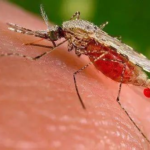
Editor's Note:From January 3–5, 2025, the 5th Annual Meeting of Chinese Alliance for Societies of Hematology (CASH) was held in Tianjin under the theme “Comprehensive Hematology, Comprehensive Health, and Comprehensive Well-being.” The event gathered leading experts from China and abroad to discuss the latest advancements and future trends in hematology. Professor Jun Shi, Deputy Director of the Institute of Hematology & Blood Diseases Hospital, Chinese Academy of Medical Sciences , followed up on his remarkable presentation at last year’s CASH conference with an update on lentiviral vector gene therapy for thalassemia.In this exclusive feature, Hematology Frontier invited Professor Shi to share the promising clinical results achieved by his team and outline their future research plans.Hematology Frontier: Which sub-forum did you participate in at this year’s CASH conference? Could you summarize its main topics? Your presentations this year and last year both focused on lentiviral vector gene therapy for thalassemia. What significant breakthroughs have you made in your research compared to last year?
Professor Jun Shi:I participated in the Thalassemia Clinical Translation Forum at this year’s CASH meeting. The forum primarily focused on the current status of hematopoietic stem cell transplantation (HSCT) for thalassemia in China, clinical applications of gene therapy technologies (such as innovative base editing and CRISPR-Cas9 gene therapies), and the development of therapeutic drugs for thalassemia.
This year, our primary focus has been lentiviral vector-based gene therapy for thalassemia. We led a multi-center Phase I clinical trial across four institutions in China. By the end of December 2024, nine patients had completed the Phase I trial. Preliminary data showed that most patients rapidly achieved transfusion independence, with hemoglobin levels returning to normal. Many patients were able to stop transfusions within 1–2 months after undergoing gene therapy transplantation.
In parallel, our team conducted foundational studies on the in vivo differentiation and proliferation of hematopoietic stem cells modified by lentiviral vectors. The results suggest that introducing viral sequences into hematopoietic stem cells using lentiviral vectors is both safe and effective. Current short-term data support this conclusion.
Our clinical trial outcomes, including engraftment and safety data for the nine patients, have demonstrated superior results compared to international studies on similar gene therapies. Platelet engraftment occurred within 3–4 weeks, and the most recent case achieved engraftment in just 2 weeks, which is slightly faster than the data reported in international clinical studies on comparable therapies.
Hematology Frontier: As the Phase I clinical trial progresses, what do you see as the key priorities for future Phase II and III studies? What are your research plans moving forward?
Professor Jun Shi: The year 2024 was marked by significant progress in gene therapy for thalassemia. Not only did our team achieve important milestones, but many other major clinical studies in China also collected substantial data, with sufficient follow-up times to confirm efficacy and safety.
Looking ahead to 2025, we aim to enhance the long-term follow-up data from these clinical studies to facilitate the seamless progression to subsequent trials. The next breakthroughs will focus on validating the safety and efficacy of gene therapy in adult thalassemia patients and further expanding its application to adolescents and children.
In our Phase I trial, we included nine patients: three adults, three adolescents, and three children. Across all age groups, lentiviral vector-based gene therapy demonstrated excellent safety and efficacy. Consequently, our Phase II and III trials will continue to build on the Phase I approach, prioritizing the verification of safety and efficacy in adult patients first.
Although significant progress has been made in thalassemia prevention in China, including a noticeable reduction in the birth rate of thalassemia-affected newborns, there remains a considerable population of adolescent and adult patients who require attention. Our goal is to ensure these patients have access to advanced treatment options.
This includes standardized blood transfusion and iron chelation therapies, as well as monitoring growth and development and managing diet. Such measures will prepare thalassemia patients for participation in innovative clinical trials and potentially for allogeneic HSCT.
About Professor Jun Shi
- Deputy Director, Institute of Hematology & Blood Diseases Hospital, Chinese Academy of Medical Sciences
- Director, Red Blood Cell Disease Diagnosis and Treatment Center & Regenerative Medicine Treatment Center
- Deputy Director, National Center for Clinical Research on Hematological Disorders
- Committee Member, Hematology Branch of the Chinese Medical Association, Vice-Chair of the Red Blood Cell Disease Group
- Research Focus: Gene therapy for thalassemia, CAR T-cell therapy for autoimmune diseases, and hematopoietic regeneration mechanisms and innovative interventions for bone marrow failure disorders


